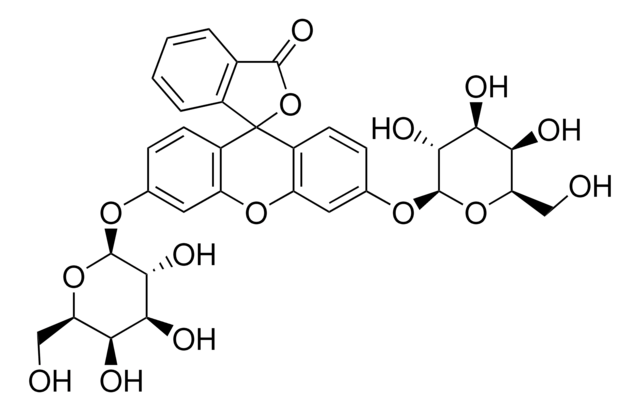L2387
Lipopolysaccharides from Salmonella typhosa
purified by gel-filtration chromatography
Sinonimo/i:
LPS
Autenticatiper visualizzare i prezzi riservati alla tua organizzazione & contrattuali
About This Item
Prodotti consigliati
Origine biologica
bacterial (Salmonella typhosa)
Livello qualitativo
Stato
lyophilized powder
Purificato mediante
gel-filtration chromatography
Impurezze
<1% Protein
Colore
white to faint yellow
Solubilità
water: soluble
Temperatura di conservazione
2-8°C
Cerchi prodotti simili? Visita Guida al confronto tra prodotti
Categorie correlate
Descrizione generale
This product is extracted from Salmonella typhosa and purified by gel filtration. The source strain is ATCC 10749.
Applicazioni
Lipopolysaccharides (LPSs) are characteristic components of the cell wall of Gram-negative bacteria. LPS and its lipid A moiety stimulate cells of the innate immune system by the Toll-like receptor 4 (TLR4), a member of the Toll-like receptor protein family, which recognizes common pathogen-associated molecular-patterns (PAMPs).
Azioni biochim/fisiol
Lipopolysaccharides (LPS) are localized in the outer layer of the membrane and are, in noncapsulated strains, exposed on the cell surface. They contribute to the integrity of the outer membrane, and protect the cell against the action of bile salts and lipophilic antibiotics.
Nota sulla preparazione
The product is soluble in water (5 mg/ml) or cell culture medium (1 mg/ml) yielding a hazy, faint yellow solution. A more concentrated, though still hazy, solution (20 mg/ml) has been achieved in aqueous saline after vortexing and warming to 70-80 oC. Lipopolysaccharides are molecules that form micelles in every solvent. Hazy solutions are observed in water and phosphate buffered saline. Organic solvents do not give clearer solutions. Methanol yields a turbid suspension with floaters, while water yields a homogeneously hazy solution.
Altre note
To gain a comprehensive understanding of our extensive range of Lipopolysaccharides for your research, we encourage you to visit our Carbohydrates Category page.
Prodotti correlati
N° Catalogo
Descrizione
Determinazione del prezzo
Avvertenze
Danger
Indicazioni di pericolo
Consigli di prudenza
Classi di pericolo
Acute Tox. 2 Oral
Codice della classe di stoccaggio
6.1A - Combustible acute toxic Cat. 1 and 2 / very toxic hazardous materials
Classe di pericolosità dell'acqua (WGK)
WGK 3
Punto d’infiammabilità (°F)
Not applicable
Punto d’infiammabilità (°C)
Not applicable
Scegli una delle versioni più recenti:
Possiedi già questo prodotto?
I documenti relativi ai prodotti acquistati recentemente sono disponibili nell’Archivio dei documenti.
I clienti hanno visto anche
Thomas C Darton et al.
PLoS neglected tropical diseases, 10(8), e0004926-e0004926 (2016-08-18)
Typhoid persists as a major cause of global morbidity. While several licensed vaccines to prevent typhoid are available, they are of only moderate efficacy and unsuitable for use in children less than two years of age. Development of new efficacious
Malick M Gibani et al.
Clinical infectious diseases : an official publication of the Infectious Diseases Society of America, 68(8), 1265-1273 (2018-09-27)
Shedding of Salmonella Typhi or Paratyphi in the stool or urine leads to contamination of food or water, which is a prerequisite for transmission of enteric fever. Currently, there are limited data on the effect of vaccination or prior exposure
Thomas C Darton et al.
Frontiers in microbiology, 8, 1794-1794 (2017-10-04)
Current diagnostic tests for typhoid fever, the disease caused by
Claire S Waddington et al.
Clinical infectious diseases : an official publication of the Infectious Diseases Society of America, 58(9), 1230-1240 (2014-02-13)
Typhoid fever is a major global health problem, the control of which is hindered by lack of a suitable animal model in which to study Salmonella Typhi infection. Until 1974, a human challenge model advanced understanding of typhoid and was
Elyse A Schmidt et al.
The Journal of biological chemistry, 292(11), 4651-4662 (2017-02-06)
The immunity-related GTPases (IRGs) are a family of proteins that are induced by interferon (IFN)-γ and play pivotal roles in immune and inflammatory responses. IRGs ostensibly function as dynamin-like proteins that bind to intracellular membranes and promote remodeling and trafficking
Il team dei nostri ricercatori vanta grande esperienza in tutte le aree della ricerca quali Life Science, scienza dei materiali, sintesi chimica, cromatografia, discipline analitiche, ecc..
Contatta l'Assistenza Tecnica.



